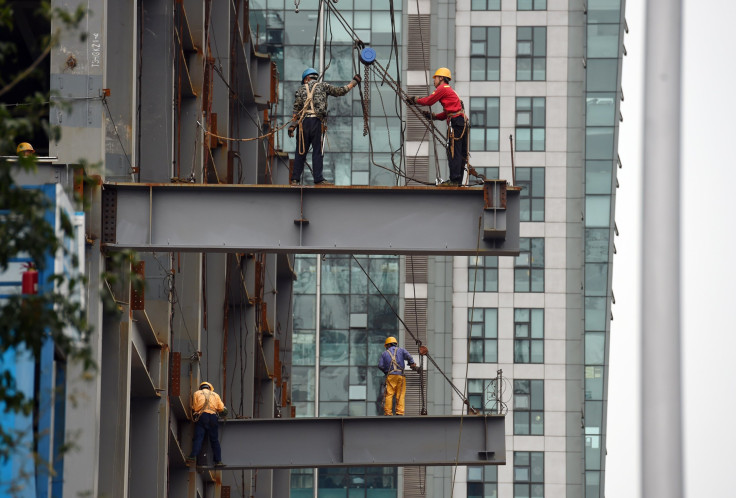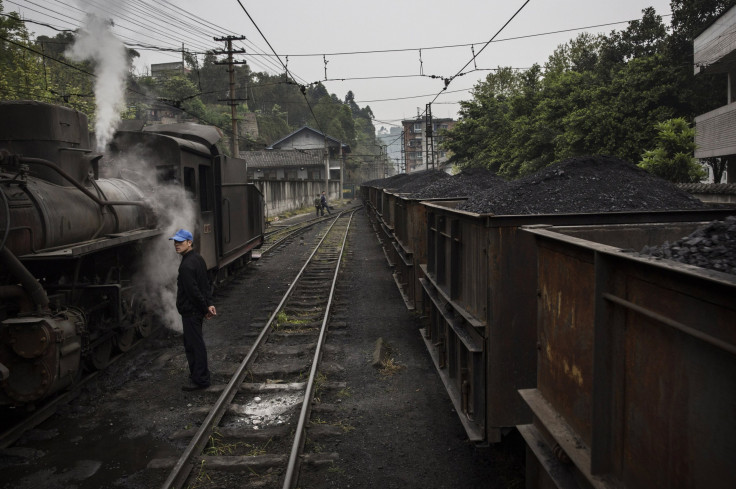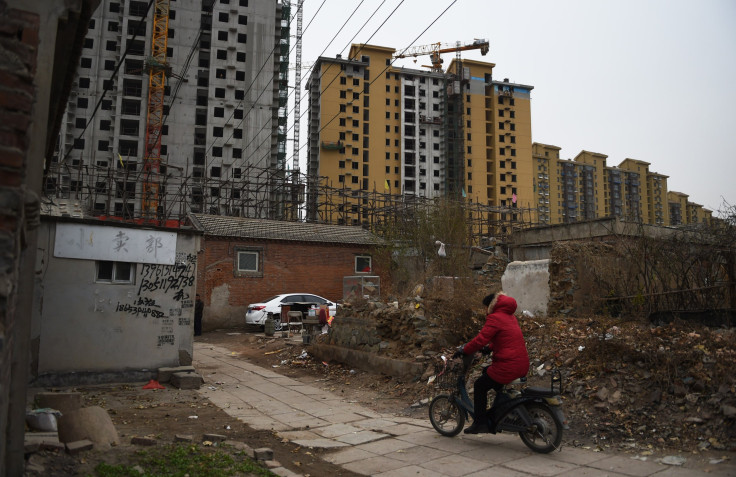China’s Slowdown 'Predictable', Economy Still Growing At 'Decent Pace', Says Leading Analyst

SHANGHAI -- Chinese moviegoers are spending more hours -- and more yuan -- in front of the big screen than ever before. Retail sales are up with Apple Inc., for example, seeing “strong growth” in a market of "unprecedented opportunity," as CEO Tim Cook put it Wednesday.
Meanwhile, Chinese tourism continues to grow exponentially, the country’s property market is rebounding, and private entrepreneurs are getting more access to financing. But, with China’s GDP growth at its lowest level since the Global Financial Crisis, a stock market slump, falling exports and an unexpected -- albeit small -- devaluation of the currency last month, such details are easily ignored. But to Andy Rothman, China investment strategist for Matthews Asia, the U.S.’s largest fund manager specializing solely in Asia, these are important indicators.
“I’m bullish about China’s economic prospects -- within the context of expecting that every year everything is going to grow a little more slowly," he says in an interview with International Business Times. "We have to stop with this view that if things are growing more slowly it’s a crisis.”

Rothman has been observing China's economy from the inside for some three decades, first as an American diplomat and later as a Shanghai-based analyst. He travels widely around the country, and believes he has good grounds for his optimism:
“I can see when I go into shops, or when I go traveling and see the domestic tourism, that the economy is clearly growing at a decent pace,” he says. “Movie box office revenue rose 54 percent in the second quarter of the year, compared to 21 percent a year earlier. In July, inflation-adjusted retail sales rose 10.4 percent year-on-year in July, express parcel deliveries, [an important indicator in the world’s fastest growing e-commerce market] rose 47 percent year-on-year, and Chinese visitor arrivals in Japan more than doubled compared to the same month a year earlier.”
July is significant, because it was the month when China’s stock market tumbled some 30 percent, and exports fell by more than 8 percent. Together, these events sent shockwaves through the global economy, particularly after China unexpectedly devalued its currency -- by about 2.8 percent -- the following month.
Rothman says it’s clear that China’s export-oriented manufacturing has weakened in recent years, along with construction and related industries -- but he says such problems are offset by the fact that the country has undergone a “significant rebalancing,” with services and consumption now the largest part of the economy, and in a “very healthy” state.
“In the first half of this year, consumption accounted for 60 percent of GDP growth, and the sector is growing at more than 10 percent,” he says.

Export Slowdown Not Such A Drag
As for the fall in exports, Rothman says this should not have as large an impact on the Chinese economy as a whole as might be expected: “My estimate is that only about 10 percent of the value produced by Chinese factories today is about exports,” he says, noting that this is a significant change from some 20 percent a decade ago.
The 2008-2009 financial crisis contributed to this rebalancing, with many companies shifting their focus to the growing domestic market.
Indeed, Rothman does not believe that the recent devaluation of the yuan (from about 6.2 to the dollar to about 6.4 now) was primarily aimed at stimulating exports. If this were the aim, he says, a devaluation of less than 3 percent would be “laughable."
"The main reason Chinese exports are weak is not the currency, it’s weak global demand -- consumers around the world are saying I have less appetite right now, I’m not in a buying mode.”
He adds that “the Chinese share of global trade has kept going up” in recent years, “despite the strong appreciation of the currency.” And even this year, he adds, China’s exports have fallen far more slowly than those of countries like Germany.
Like many observers, Rothman says he was surprised that the devaluation was done so suddenly, but he believes -- as China’s Premier Li Keqiang suggested at the summer World Economic Forum meeting in Dalian Wednesday -- that it was a response to the sharp appreciation of the dollar (to which the yuan has long been pegged) pushing up the value of the currency against others in recent months -- and also part of moves to “change the peg away from the dollar to a trade-weighted basket of currencies.”
Stock Market Not The Real Economy
Rothman also says it’s important to bear in mind that the Chinese stock market, which has lost some 40 percent of its value in recent months, “is not the economy.” Even if the number of investors has soared to some 70 million earlier this year as the market boomed, Rothman says most have relatively low exposure in terms of investments -- and the market has never been very closely linked to China’s real economic situation.
This latter point is not a particularly controversial opinion: Shang-Jin Wei, chief economist of the Asian Development Bank, noted this week that “when Chinese GDP was growing strongly during 2010-2013, stock prices were falling.”
One reason -- though analysts are hoping this will soon change -- is that listings on China’s market have always been tightly controlled by the government, and have favored traditional state enterprises, leaving many of China’s private companies, the most dynamic sector of the economy, unable to list.
As a result the market chugged along at a fairly consistent level of not much more than 2,000 points between 2009 and mid-2014, way below its 2009 peak of more than 6,000. But last year the government pledged to put more emphasis on the market to help raise funds for retooling the economy, and raised the possibility of reforms to make listings more flexible, as well as opening a trading link to the much more mature Hong Kong stock market.
The result: Chinese investors -- who saw few other investment options, since bank interest rates were low and the property market sluggish -- surged into the stock market, which rose 150 percent in the year to early June before plunging back as GDP fell, and, equally significantly, the government tightened rules on borrowing to buy shares [though it’s worth noting that it’s still some 50 percent higher than its pre-boom average].
GDP Growth Still Significant
Global economic sentiment has also been hit by the fall in China’s GDP, from 7.3 percent (according to the latest revised figure) last year to 7 percent in the first half of this year, with some analysts predicting it may fall to 6.4 percent or lower in this quarter -- though most do expect at least a slight rebound in the final quarter of the year, as the government increases infrastructure spending.
On this question too, however, Rothman remains sanguine: he says some degree of slowdown was inevitable, as a result of the shift away from the massive levels of infrastructure investment seen in the years after the Global Financial Crisis of 2009, and the slowdown in export-oriented growth over the past few years -- but believes it’s not a cause for alarm.
“There’s been a lot of change in structure of the economy,” he says. “We’re past the peak in the growth rate of infrastructure spending, and of new home construction -- but that doesn’t mean that China is struggling, just that they built so many roads and bridges and power plants that the growth rate of new construction of those things should be slowing down.”

In fact, he says, “I’ve been predicting for years now that every year, on average, the GDP growth rate will be a little bit slower. But that’s not a disaster -- if it’s 7 percent or 6 percent, it’s still one of the fastest growth rates on the planet.”
And while for much of the past decade it has been the accepted wisdom that China needed to grow at 8 percent just to stand still -- in other words to create enough jobs to absorb new workers, and avoid social unrest -- Rothman says it’s important to note that the “base effect” means China’s economy is now far larger than it was 10 or even 5 years ago, meaning that even if the GDP growth rate is slower these days, in real terms, the amount of wealth being created is still growing exponentially.
”Last year GDP growth was 7.3 percent – 10 years before that it was 10.1 percent,” he says. “But because of the larger base on which the figures are calculated, the incremental growth of the Chinese economy last year was twice as big in real terms as the expansion at 10.1 percent GDP growth 10 years ago. So if you’re selling goods or services to Chinese people, last year was actually a much better year in terms of opportunity than 10 years ago.”
Rothman does not subscribe to the theory, recently expounded by many observers, that China’s official GDP figures are significantly exaggerated -- he says that, even if it may be the case that some figures are massaged by local officials eager to please Beijing, the central government is “doing its own survey work to get around the problem.”
Besides, he says, GDP growth rate is not everything: “Nobody in the world invests in GDP growth rate. What’s the U.S. growth rate?” he asks rhetorically. “But the [U.S.] stock market has been doing really well.”
Rust Belt
There’s no doubt that one area of China’s slowdown that has hit the global economy hardest is the reduction in China’s thirst for raw materials, which has affected producers around the world, from Australia to Brazil. And Rothman says the slowdown has hurt China’s own raw material producers and processors too -- particularly in the north and northeast of the country.
“We know that everything related to construction and natural resources extraction is really suffering now, because there’s a lot of overcapacity and demand growth is much slower.” It’s a process that began some four years ago, after demand from the construction industry peaked in 2011, he notes. As a result, he says, “there’s a distinct rust belt in China -- five provinces from Shanxi [central northern China] to the northeast -- where they produce coal, cement, glass, iron ore, steel -- are really, really struggling.”

However, he adds, “that’s five provinces out of 31.” In other parts of the country, he says, certain sectors of China’s manufacturing industry are clearly hurting. But he sees rising wages and living costs in southern and eastern China -- where some companies have complained of a shortage of people willing to work in factories -- as being as much to blame for the struggles of family firms in the textile or electronics sectors as falling exports.
And though some companies are closing in these areas, he says workers are still able to find jobs in new service industries, while changing demographics mean the pool of new young laborers is shrinking, and, as a result, “there is not the same pressure to create new jobs as there was a decade ago.”
New Markets
And Rothman says much of the industry that is closing in China’s prosperous southeast is reappearing in less developed areas in the hinterland -- helping the country’s rural migrant workers find jobs closer to their homes than they could in the past.
“This is all about making stuff to sell in China, moving nearer markets,” he says. “My impression is that the vast majority of factories leaving Guangdong are moving inland in China, not to Southeast Asia. I’ve been to lots of factories that have moved inland. When you talk to Chinese companies about where their fastest growing market is, it’s in central and western China, so they might as well build the products there. That’s where the people are, and the wage growth is the fastest.”
Indeed, Rothman says a key indicator of continuing growth in China overall is the fact that wages have risen at an average of 7 percent a year. “If unemployment is a major problem, then why are wages still rising?” he asks. He says this continuing growth has helped to stimulate the domestic consumption most analysts agree is crucial to the country’s economic future.
“Even after the Shanghai Composite Index fell 39 percent from its peak in early June, China continues to be the world’s best consumption story,” he says. Even in the auto sector, where sales have slowed for some, though not all, manufacturers in recent months -- partly as a result of the stock market volatility, and partly of the government’s anti-corruption campaign -- there is steady growth in inland cities, and Rothman adds that “consumption of gasoline rose 10 percent in July, compared to a decline of 1 percent a year ago.”
And he says that while construction in China’s real estate sector has slowed, “so many new homes were built over the last 15 years that it makes sense for it to grow more slowly.” The figures suggest there is still pent-up demand for property, he adds, with China’s housing market -- which the government spent several years trying to cool from 2011 onwards -- rebounding markedly this year.
“In July new home sales by volume were up 21 percent year-on-year; in June they were up 18 percent,” he says, adding that “China’s market for secondary or used homes is also huge now: especially on the east coast where [modern] housing development started earlier.”

And though there have been signs of anxiety in the real estate market, with Shenzhen-based developer Kaisa defaulting on overseas bond repayments, and temporarily suspending trading earlier this year, Rothman says big developers are generally coping.
“If you look at the 12 biggest listed residential property sales developers in China, last year their sales volume was up 18 percent year-on-year, and their revenue up 16 percent,” he notes. At the same time, he adds, lower leveraging among home buyers in China means less risk of the kind of property bubble that some observers have long predicted in the country.
Some analysts have, however, expressed concern that the Chinese government’s economic policy-making over the past year -- including talking up the stock market, and not giving detailed explanations for the devaluation of the currency -- has appeared unpredictable; this has alarmed not just global markets but also wealthy Chinese citizens, who, some observers says, are increasingly thinking of leaving the country.
Policy Progress
Rothman says that “there is no question that the communications about their economic policy have been poor” -- yet in practice, he says, some important progress is being made in terms of the kind of more market-oriented reforms many analyst agree that China now needs. Banks are making more loans to private companies -- which have traditionally struggled to raise funding through legal channels -- than to the state-run sector, for example.
“I think they’ve done a really good job of improving the operating environment for small private companies,” Rothman says. "The majority of new bank loans are now going to private companies and households -- and that’s a huge change for China.”
Many analysts say far greater financial reform is needed if China’s economy is to become more transparent and efficient -- as the European Union Chamber of Commerce in Beijing demanded this week -- and Rothman agrees that progress needs to be made in many areas.
However, he says, “there’s a big difference between that and thinking the place is collapsing -- the economy is still growing at more than 6 percent, income is up 7 percent, retail sales growth is 10 percent. Most of what’s happening here is doing quite well.”
© Copyright IBTimes 2024. All rights reserved.





















